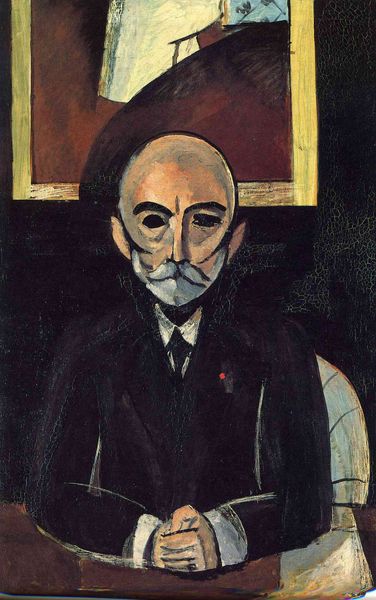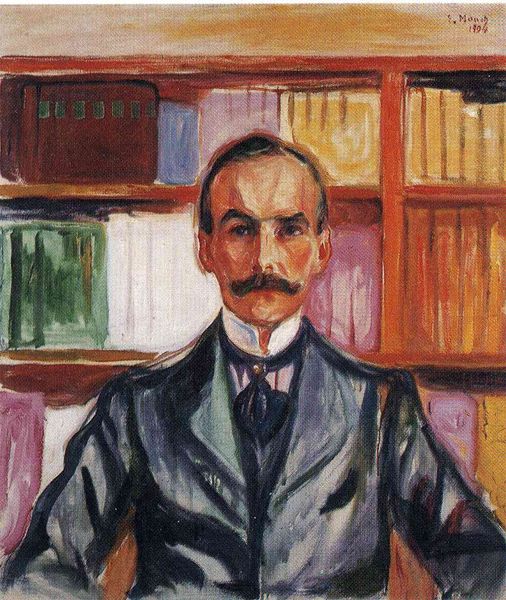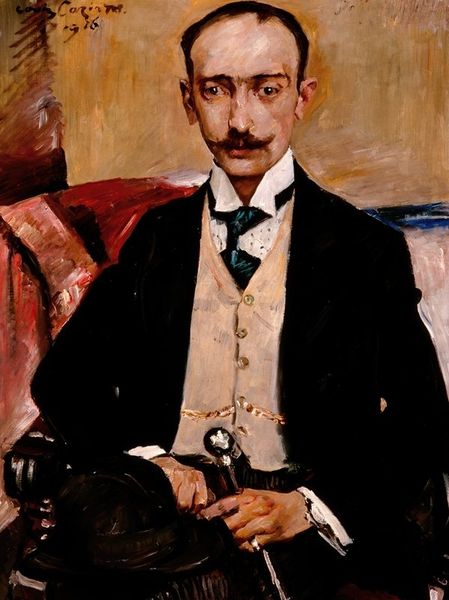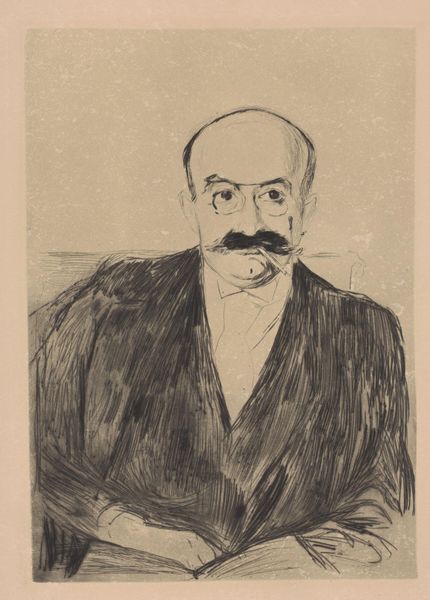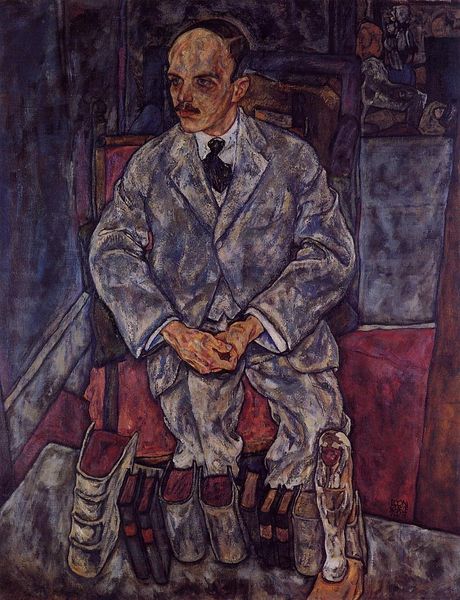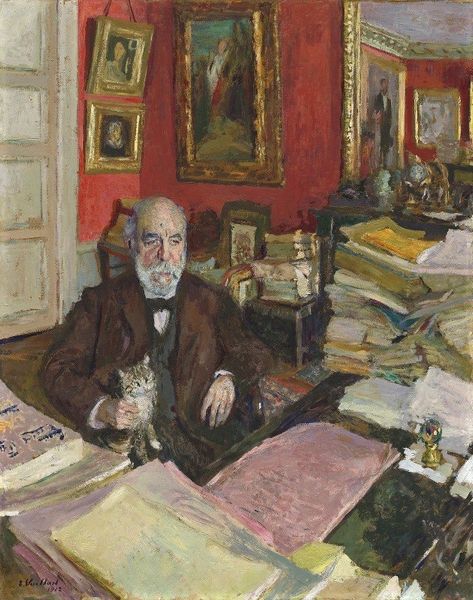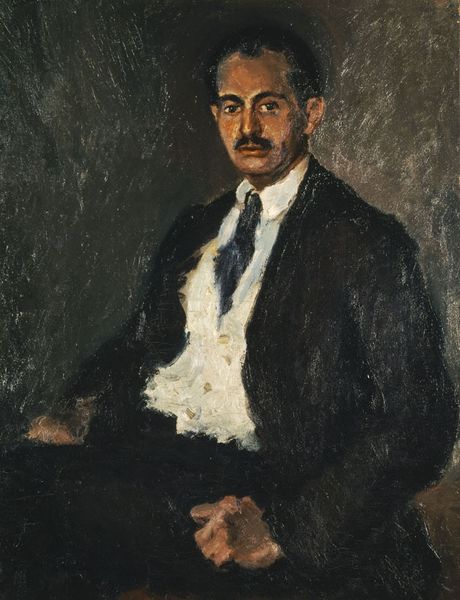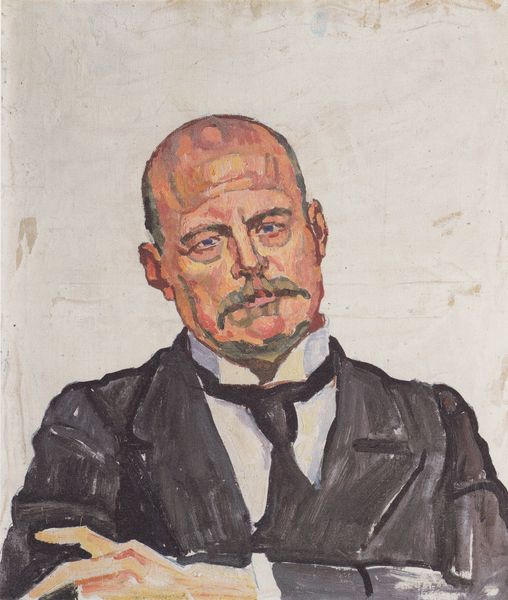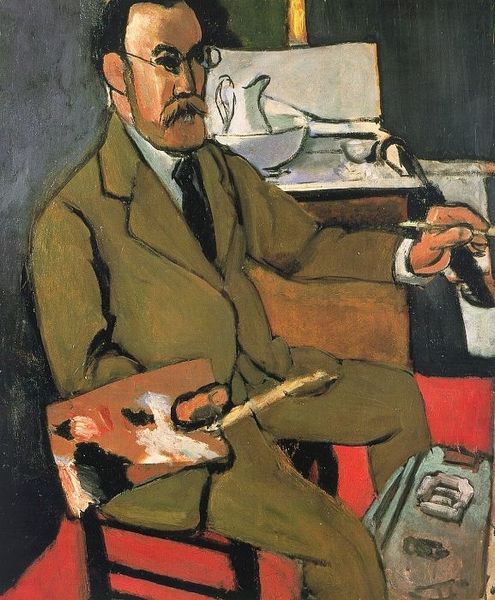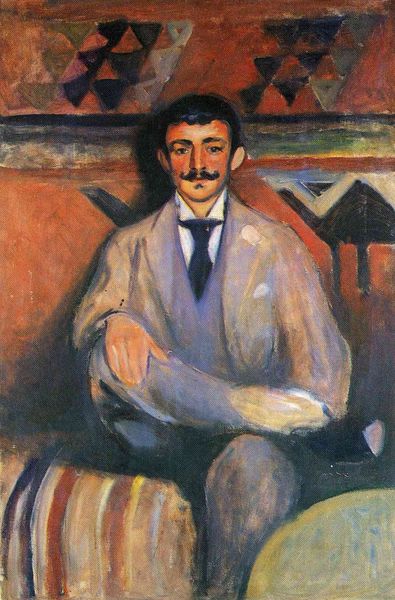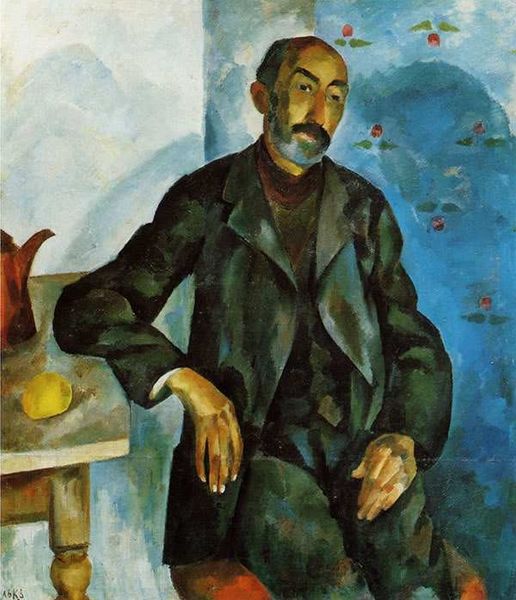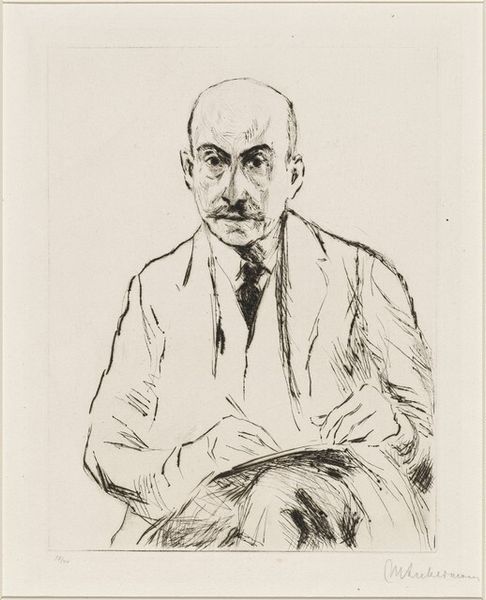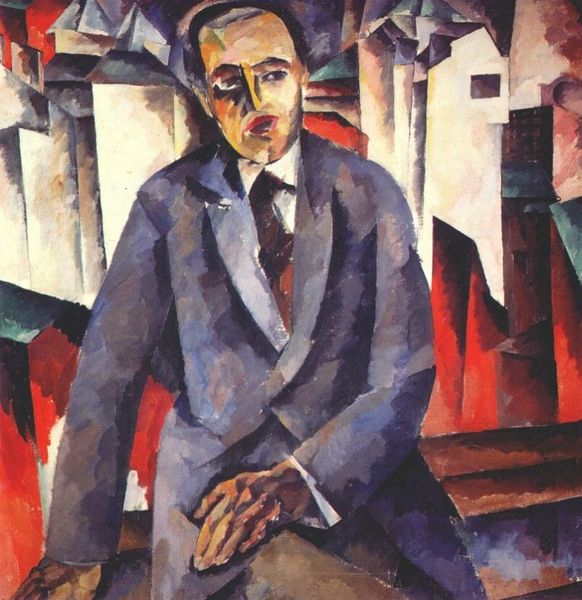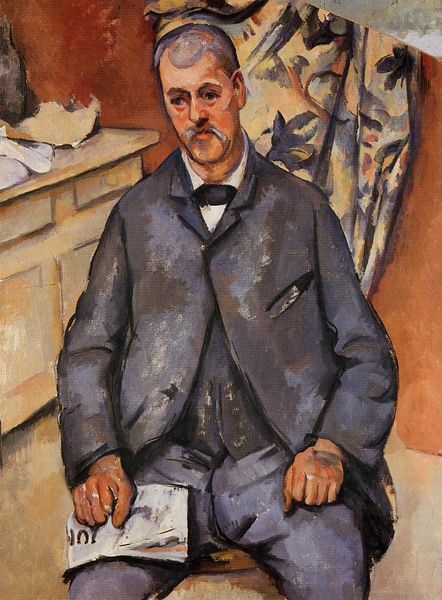
Copyright: Public domain US
Editor: Here we have Henri Matisse's "Auguste Pellerin (I)," created in 1917 with oil paints. The portrait possesses this unusual blend of formality and… intimacy, perhaps? He’s in a suit, yet the style feels very personal. How do you interpret this work? Curator: Seeing this portrait through a historical lens, it's fascinating how Matisse navigates the public and private spheres of representation. World War I was raging during its creation; portraiture, especially of prominent figures like Pellerin, became heavily imbued with nationalistic and symbolic weight. Is Matisse subverting or contributing to that? Editor: That’s an interesting thought! I hadn’t considered the wartime context so directly. The brushstrokes are rather bold for such a formal subject…almost Fauvist in their energy. Curator: Precisely. The 'boldness' is key. Matisse seems to question traditional, honorific portraiture. Pellerin was a fellow art collector - perhaps a sign that patronage can evolve into something else in the turmoil? Instead of idealization, we see a rawer, more immediate rendering of a man within his personal space, defying academic painting. Editor: So it’s like a rebellion through intimacy, against the grand, official portraits of the time? Curator: In a sense, yes. Consider also the flattening of perspective, influenced by Cubism. Is Matisse trying to level the playing field, challenging not only artistic conventions but also social hierarchies through the democratization of representation? Editor: That’s a lot to unpack from one portrait! It really puts the "politics of imagery" into perspective. Thanks! Curator: Indeed. Art constantly reflects and shapes our understanding of power, status, and intimacy. It helps to never consider it outside of history.
Comments
No comments
Be the first to comment and join the conversation on the ultimate creative platform.
